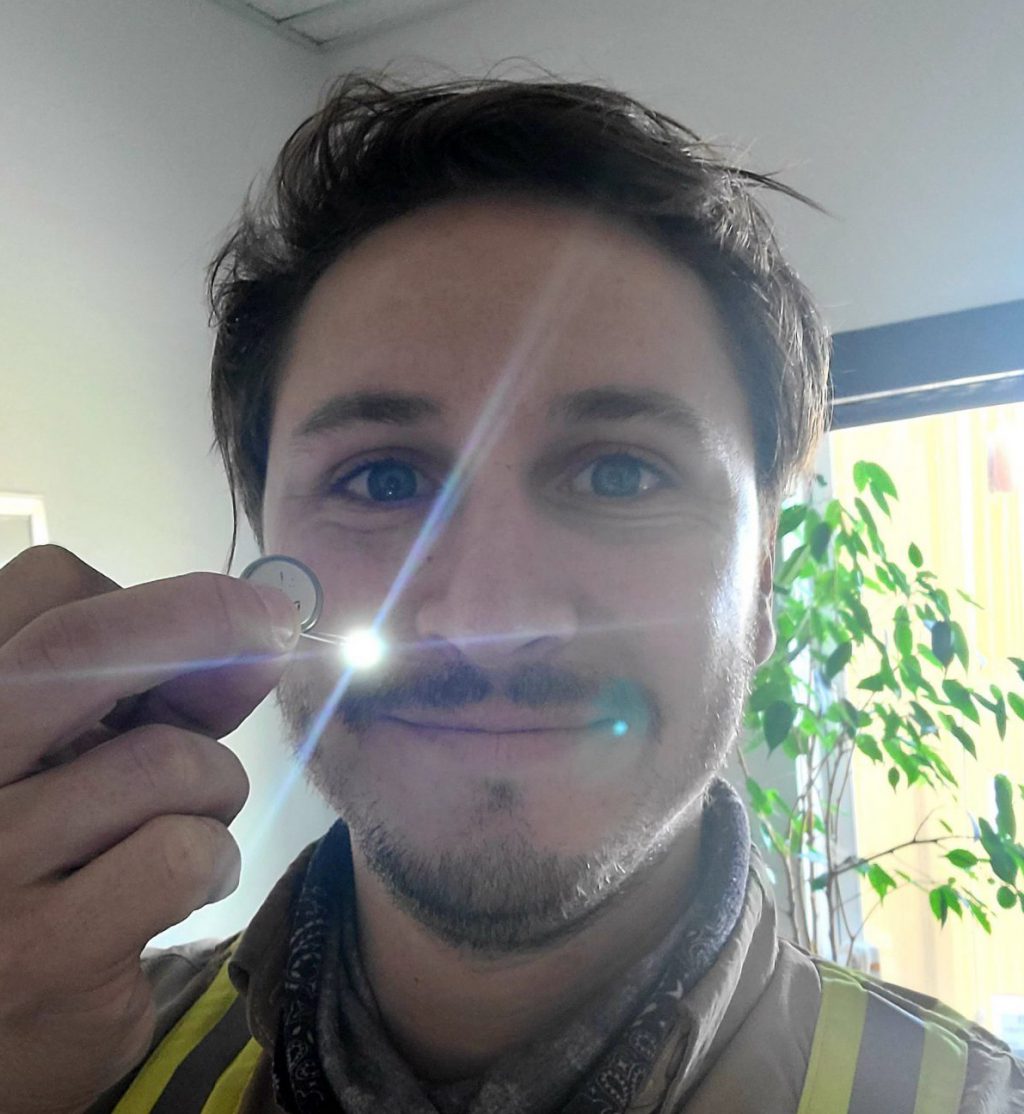Rio Tinto achieves battery grade lithium production at Boron plant – from waste rock

Lithium project superintendent Alex Macdonald holds a light powered by a battery made using lithium from waste rock at Rio Tinto's boron mine in Southern California. Photo courtesy Rio Tinto.
Rio Tinto Plc [RIO-NYSE, LSE, ASX; RTPPF-OTC] has commenced production of battery-grade lithium from waste rock at a lithium demonstration plant at the 100%-owned Boron mine in Kern County on the western edge of the Mojave Desert in southern California.
The demonstration plant is the next step in scaling up a breakthrough lithium production process developed at Boron, to recover the critical mineral and extract additional value out of waste piles from over 90 years of mining at the operation.
An initial small-scale trial in 2019 successfully proved the process of roasting and leaching waste rock to recover high grades of lithium.
The demonstration plant has a design capacity of 10 tonnes per year of battery grade lithium. It will be run throughout 2021 to optimise the process and inform Rio Tinto’s feasibility assessment for progressing to a production scale plant with an initial capacity of at least 5,000 tonnes per year, or enough to make batteries for approximately 70,000 electric vehicles.
Rio Tinto Minerals CEO Sinead Kaufman said “This is a valuable next step in scaling up our production of lithium at the Boron site, all from using waste material without the need for further mining. It shows the innovative thinking we are applying across our business to find new ways to meet the demand for emerging commodities like lithium, which are part of the transition to a low-carbon future.”
Rio Tinto’s lithium pipeline includes the Jadar lithium-borate project in Serbia, for which a feasibility study is expected to complete by the end of 2021.
Development of the lithium project at Boron draws on Rio Tinto’s long standing partnership with the U.S. Department of Energy’s Critical Materials Institute (CMI), which is focussed on discovering ways to economically recover critical mineral by-products from existing refining and smelting processes. CMI experts worked alongside Rio Tinto technical leads to help solve a number of key processing challenges to produce battery grade lithium at Boron.
Mining at Boron began in 1927 and today, the mine – home to one of the richest deposits of borates in the world – produces one million tonnes of refined borates every year, or approximately 30% of global demand.
